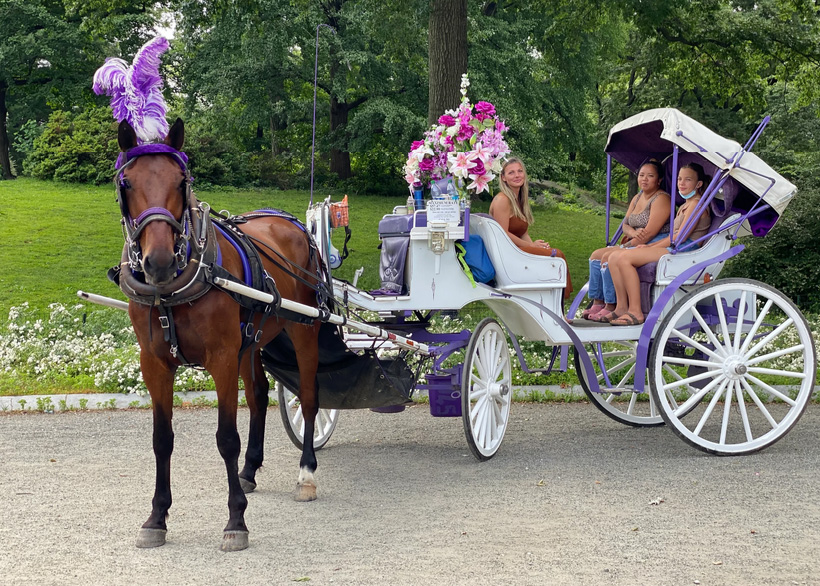New York carriage rides 2024

Top rated Central Park horse carriage tours: During the Horse Carriage Rides in Central Park Customers and their satisfaction are our #1 Priority as all our customers are treated with the upmost respect they deserve. We hope one of our many horses are able to leave you with a smile on your face. When reserving with us you will avoid being overcharged, under-serviced & disappointed. Reserve your spot today in New York City! Our Horses come from Lancaster County in Pennsylvania, as they are born and raised there. Each one of our horses loved by along the Carriage Drivers each with their own unique personalities. They are groomed multiple times a week and see a professional Veterinarian at least 2 times a year. During the rides they are fed with lots of treats such as carrots or apples and have their own water breaks including oats we provide them. Read even more details on Central Park carriage rides.
Central Park Horse Carriage Ride in New York City bringing romance and memories to locals or tourist for over hundreds of years! Central Park carriage rides date back to 1800’s when chivalry was very much alive. All Walt Disney’s love stories involved a princess on a magical horse drawn carriage . Before cars were invented , horse and carriage rides were the most popular attraction in NYC, which is also why we call it the Big Apple! Central Park Carriage Rides has become one of the most traditional and romantic attractions in NYC.
Come learn about the making of Central Park and what took place behind the scenes to develop the most visited park in the world. Meet our beautiful well-cared for gentle giants that have been a part of Central Park’s landscape since the very beginning. Interact with our horses during each photo stop by feeding them treats and getting to meet their one of kind personalities. Reserve your horse-drawn carriage ride through Central Park today with the highest-ranked company in New York City. We have been voted #1 company in Central Park for 5 years in a row by TripAdvisor. Read over 10000 satisfied customer reviews as well which are stretched across Facebook, Yelp, Google & TripAdvisor. Why waste your time & money with random companies when we will guarantee honest rates & customer satisfaction! See even more information on centralparkhorsecarriage.com.
In New York City, horses are a symbol of a bygone era before the advent of cars, buses and trains. It was during this time that New Yorkers got around from place to place on horseback or by means of horse-drawn carriage. As a result and over time, horses became iconic to the history of Manhattan.
Horse-drawn carriages are a wonderful way to experience the beauty of Central Park. They can be found lined up year-round at the following pickup zones:
– Grand Army Plaza: center lane at the entrance on Fifth Avenue and East 60th Street
– Sixth Avenue: within the park entrance north of Central Park South
– Seventh Avenue Entrance: the east curb, about 20 feet from Central Park South
In 1863, the first exclusively tourism-based carriage rides were offered for a fare of 25 cents a passenger. The Central Park stage line operated at that rate for the rest of the 19th century. While the coming of the automobile eliminated horses in other less fortunate cities by the middle of the 20th century, the horse and carriage never disappeared from the Plaza, 5th Avenue or Central Park South. Through the Great Depression, two World Wars, many mayoral administrations, and decades of change, one thing has remained constant in New York: you have always been able to ride in a carriage through Central Park.
Protection from harsh weather conditions is required for all carriage horses. From November through April, heavy winter blankets must be available in cold weather to cover a carriage horse from crest to rump. Additionally, waterproof blankets of lighter material shall always be available when it is raining and the temperature reaches 55 degrees Fahrenheit (13 degrees C) or lower. The Health Department’s weather alert system uses a central weather station’s temperature readings to provide alerts during extreme weather. The alerts can be a useful tool for all horse drivers, horse owners and stable owners.